Previous Project on Ocean Ave (Newport, Rhode Island)
In previous Archi-TEXT articles it was discussed the value of an architect to help you navigate the various phases of the design of a new home or building or the renovation of an existing one, but what are the various phases of the architectural design process? There are generally 7 definable phases:
The first step is “pre-design.” This includes the selection of the architect and a feasibility study analysis of the site. If you make a good choice on this step, you are well on your way to a successful project. This work included interviewing the client to better understand the program of the project, which are the functional requirements of the new construction, the size and orientation of the various component parts, the aesthetic goals, the scheduling requirements, and the approximate budget that is available to design and build the project.
If there is an existing site selected for the project, pre-design will often include getting a Class 1 survey of the property (which includes the property boundaries, the topography, any easements or required setbacks) and other data like soil conditions that may relate to the construction of the project.
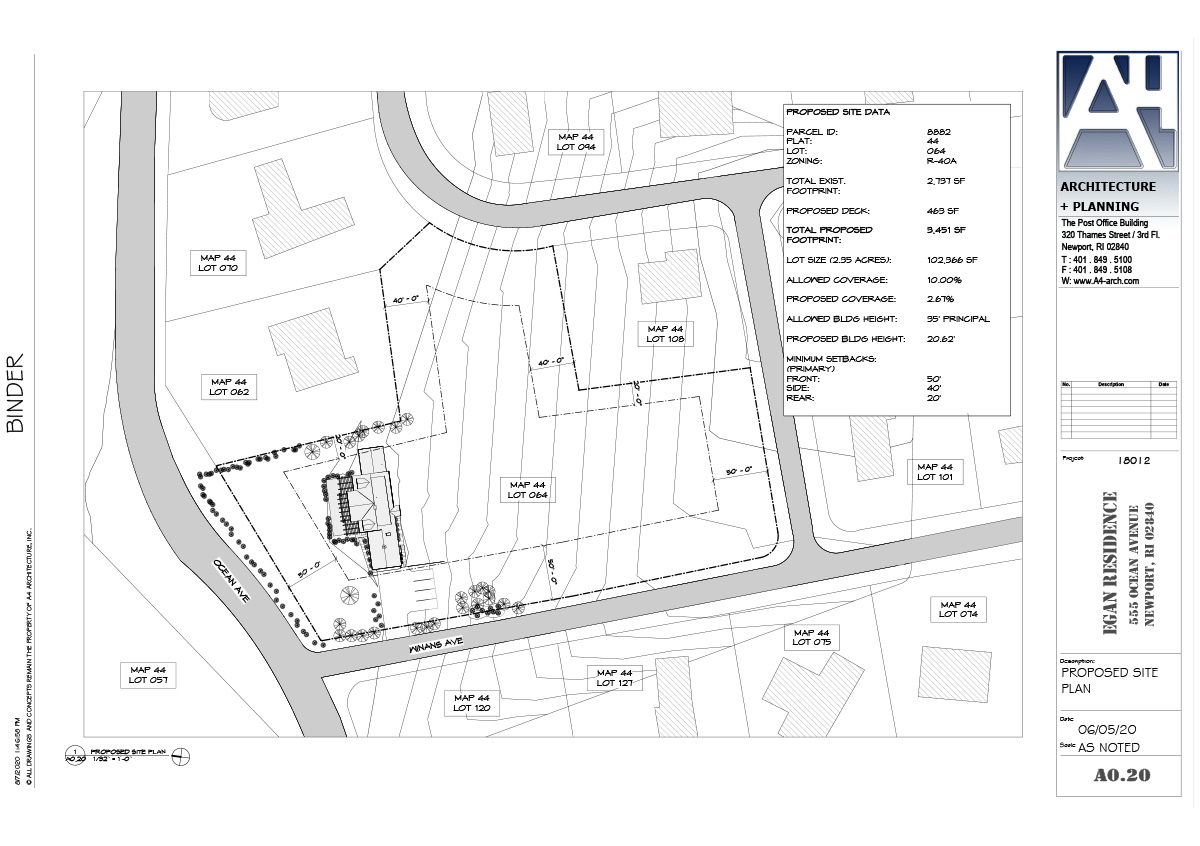
Proposed Site Plan (Newport, RI)
If there is an existing building, even if that building is to be demolished, a careful survey of the structure is generally undertaken. This can establish “grandfathered” conditions that may apply to new project and impact planning and zoning calculations. If parts of the building are to be maintained then it is especially important to get a complete documentation of the structure. These types of surveys were once done with measuring tapes and paper but new laser measuring devices now allow surveys to be conducted faster and in three dimensions to a very high level of precision. This survey will also yield important results that will establish which elements of the building are structurally sound and worth preserving and which ones are likely to need to be repaired or replaced as part of the construction process.

Before Image of Project in Newport RI
Schematic (or concept) design is the first phase where design really begins. This is the step where the architect takes all the various factors that have been established in the pre-design phase and attempt to apply them to a new building or renovation. These may be done with simple hand sketches, Sketch-Up models or even Computer Assisted Design (CAD) drawings, but they will tend to be very diagrammatic and simple. The goal of this phase is not to solve all the problems and challenges but to simply establish a workable direction for the project. Sometimes during the Schematic Design phase, several or even many alternative approaches are created for the client’s review and comment. The architect is attempting to understand the pros and cons of each alternative and to learn more about the client’s unspoken preferences and concerns, issues of structure, mechanical systems, and other things. Thanks to advances in computer technology, A4 Architecture does this work using a 3D computer model so that we can walk over clients through the concept design as if it is already built, which helps them properly visualize how the final building will look and work.

South & West Existing Elevations (Newport, RI)
Once the architect and client have agreed upon a schematic design the process moves into the “Design Development” phase. This is where the schematic design is further elaborated and refined to conform with building codes, specific equipment, structural systems, and other practical issues. It is also the phase where all the selection of materials, colors, finishes, appliances, and light fixtures and a thousand other details both large and small are addressed and the owner has the opportunity to weigh in on the decision making process. At the end of this phase the multitude of design decisions is generally complete.
The next phase is “Construction Documentation.” It is one that most owners do not generally understand because it is time consuming but does not involve the owner nearly so much as the previous three phases. Although thousands of decisions have been made between the owner representative and the architect, none of these decisions have been put to paper in a way that an outside party like a code official or a contractor can easily review and comprehend them. Construction Documents are an assembly of plans, elevations, schedules, reflected ceiling diagrams, sections and all manner of delineation to help explain how the building or renovation is supposed to look, what it is to be made of and how all the parts and pieces are supposed to fit with one another. If you have seen the assembly sheets for a bicycle, construction drawings are a bit like that but 10,000 times larger and more complicated as a building is 10,000 times larger and more complicated than a bicycle.
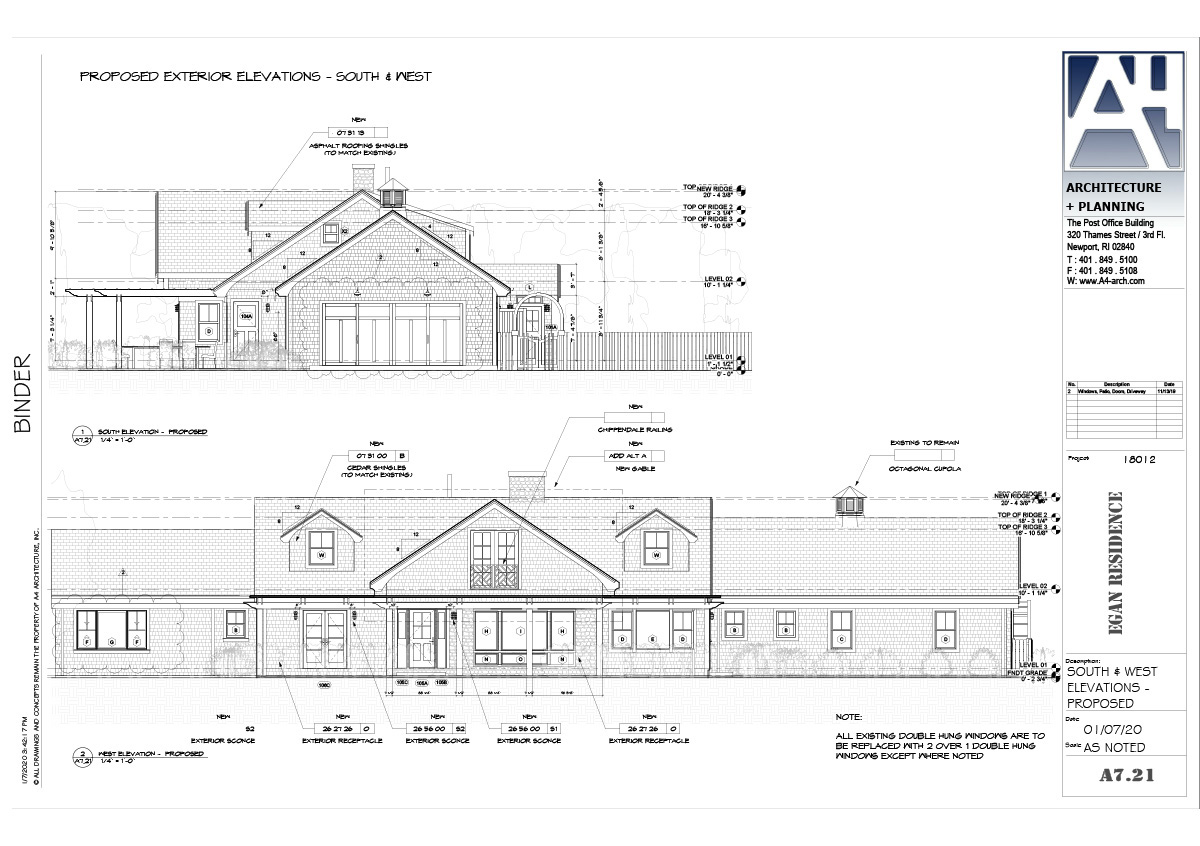
South & West Existing Elevations (Newport, RI)
The next phase is known as “Bidding, Negotiation and Permitting.” The CD’s are issued to selected contractors and they return their bids to the owner by a specific date if they are interested in being considered for the work. We often request a breakdown by category so that we have a clear understanding of each contractor’s cost structure and can see if one contractor’s numbers in a specific trade deviate from the other contractors as this is a sign that there may have been confusion with regard to that particular category of work. The owner and the architect will select one of the contractors and sign a contract with them to undertake the work based on cost, schedule to complete the work, availability and skill in producing previous projects. Oftentimes during the bidding period of two to three weeks, the construction drawings will also be filed with the appropriate building department for review and approval and so that the selected bidder can pick up the building permit after presenting various information like licensing and insurance to the building officials.
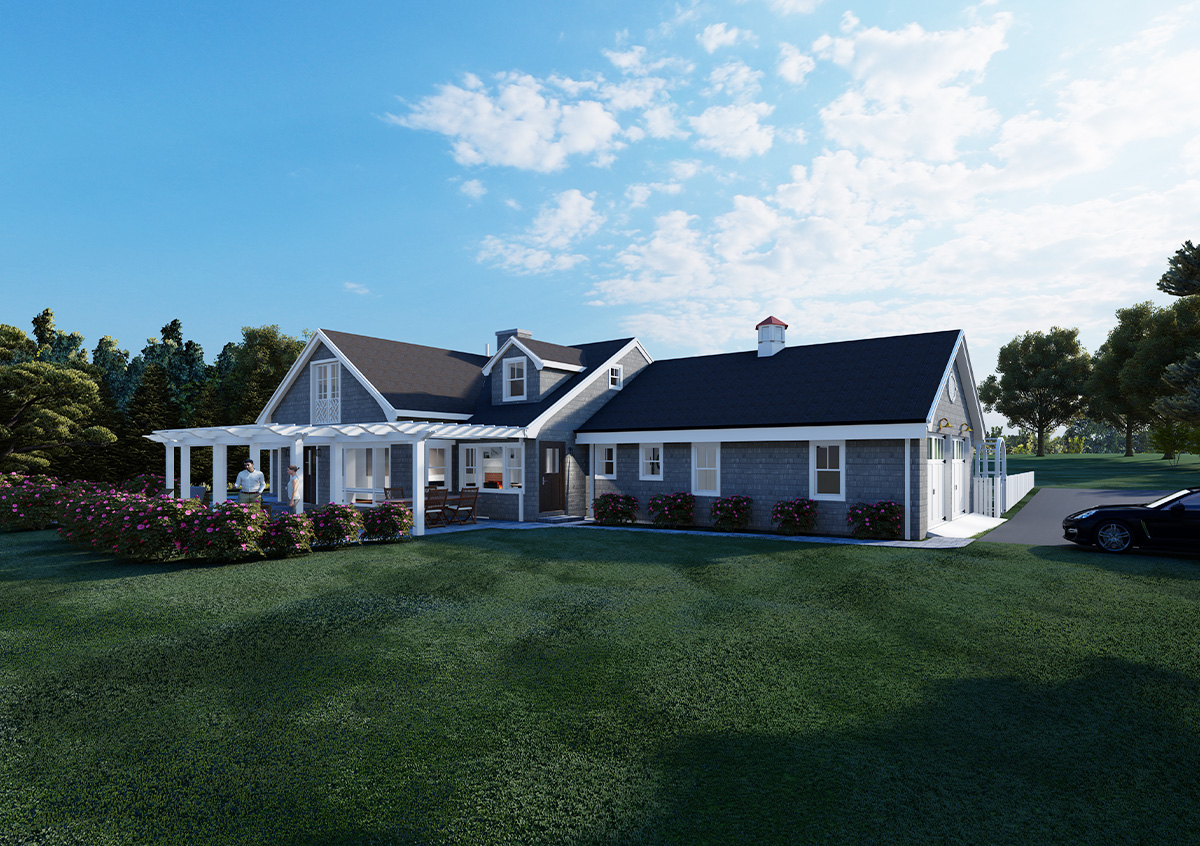
Exterior Rendering Proposed (Newport, RI)
The last of the phases of the architectural design process is often called the “Construction Administration” (or “CA” for short). Although the contract for the construction is made directly between the owner and the contractor, the architect is typically hired to serve as the owner’s expert advisor and troubleshooter during construction. The architect will typically visit the site on a weekly or bi-weekly basis to do construction observation to try to confirm that the work is being done in conformance with the construction documents. Since the architect created those documents there is no one who knows the design or intent better. The architect will also serve to confirm to the owner that work is close to percentage complete approximation made on each application of payment from the contractor. The architect will often issue weekly minutes of the site meetings to let the owner and other parties know how items stand and to issue field sketches to solve design issues that arise during construction.
At the very end of the project the architect works with the owner to issue a final “punch list” of items that must be completed or corrected before final payment is made. The architect will issue a “certificate of substantial completion,” which has certain legal implications. The architect helps the owner get an attestation of subcontractor payment and a “release of liens certificate” so no third party can sue the owner later complaining that they are part owners in the project since their installed work was not fully or properly paid for by the general contractor.
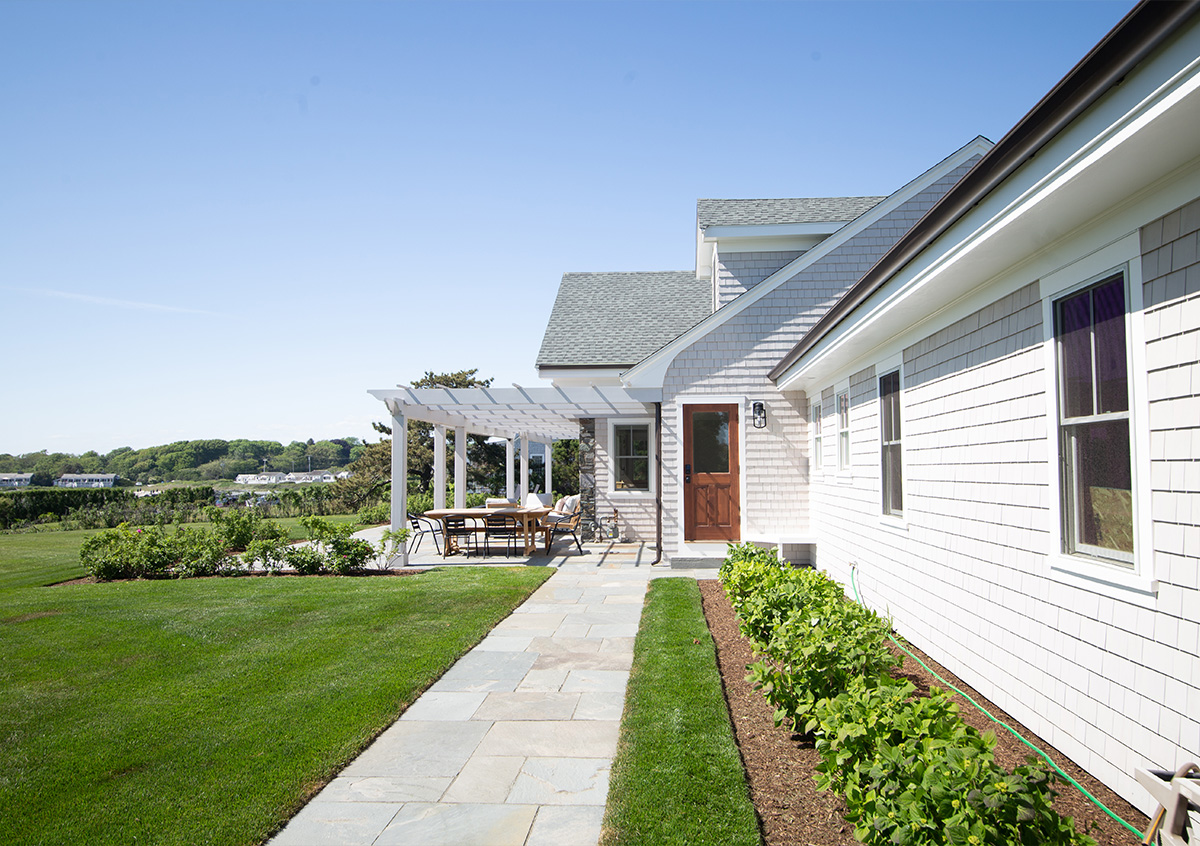
Back Image (Newport, RI)
From the first doodles showing what a prospective building might look like to the final dotting of iotas at the end of construction to make sure the owner is legally protected from unexpected claims, the entire architecture design process is structured to give the proposed building owner a complex basket of different services to help assure the design of the finished building is as good as it can be given the limitations in budget and schedule. The first time an owner goes through the process, it may seem challenging and confusing but hopefully understanding the various phases in advance will eliminate confusion and surprise on the behalf of the owner.
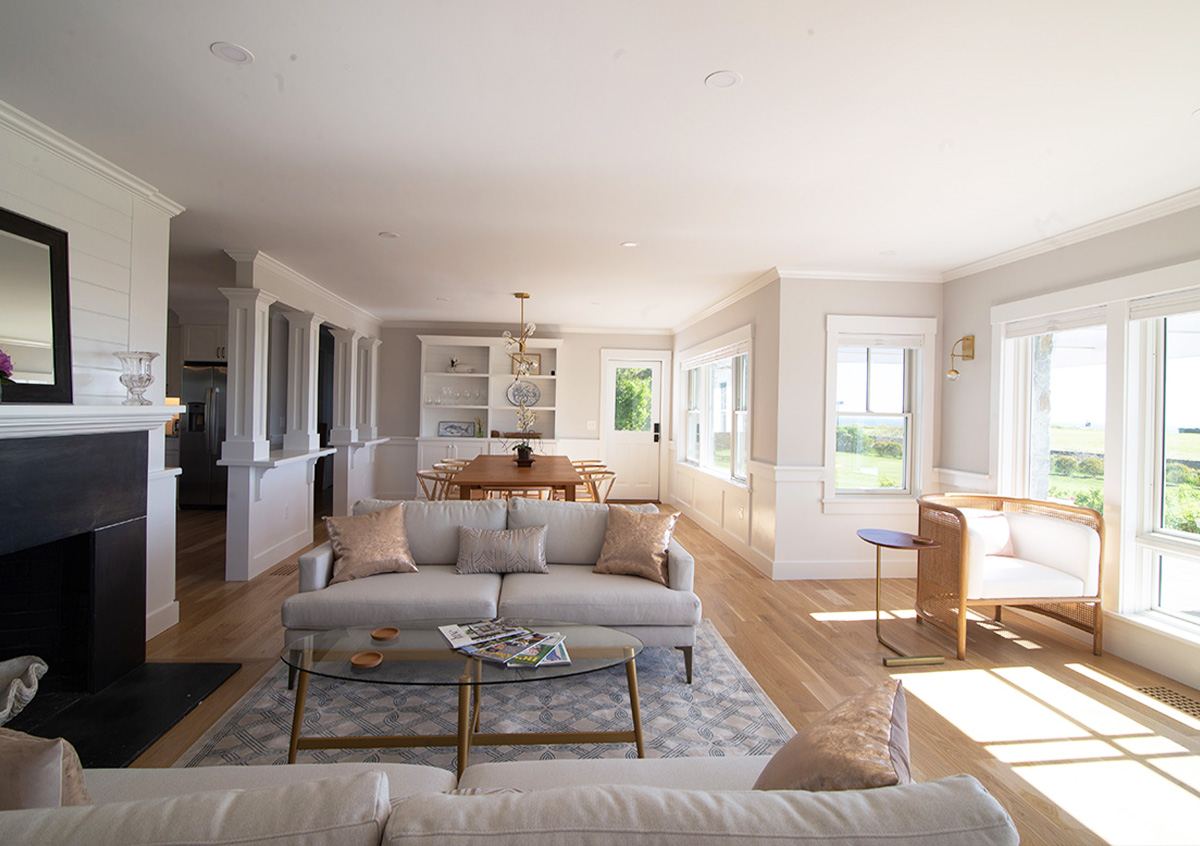
Interior Image of Living & Dining Room (Newport, RI)
Looking to remodel your home? Let’s connect.
Join the Architectural Forum to stay up-to-date with architectural news from Rhode Island and abroad.
Ross Cann, RA, AIA, LEED AP, is an author, historian, and practicing architect living and working in Newport, RI. He holds degrees with honor in Architecture from Yale, Cambridge, and Columbia Universities. He is a LEED Accredited Professional and has been trained and certified to handle issues of environmental sustainability.
At A4 Architecture + Planning we are expert at integrating building codes into our designs to provide safer and more long-lasting building solutions for our clients. If you are interested in learning more about what can do for you reach out to us at any time!
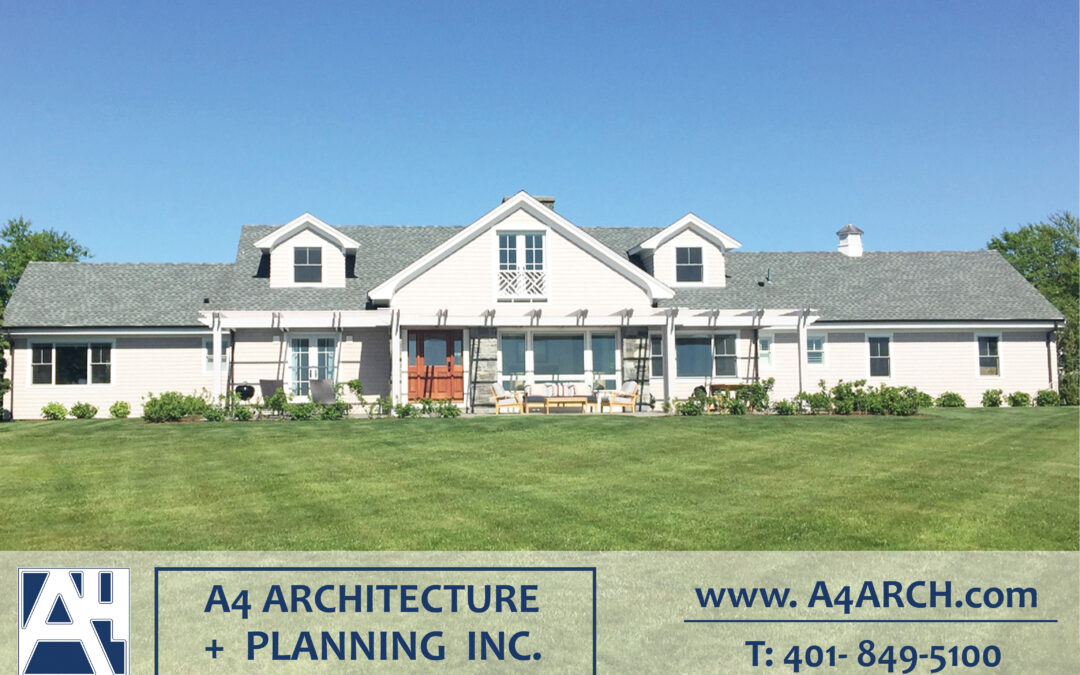
So interesting. As a Miami Realtor specializing in new construction beach condos this is very useful for my clients. Thank you for explaining all this so well.
The 3D computer model is impressive. Clients can now visualize their ideas. Years ago, this wasn’t possible, and the best approach was creating a small-scale model. The advancement of technology is remarkable and has become an essential part of the design process.
What an amazing and detailed article!
We want to demystify the process as much as possible!